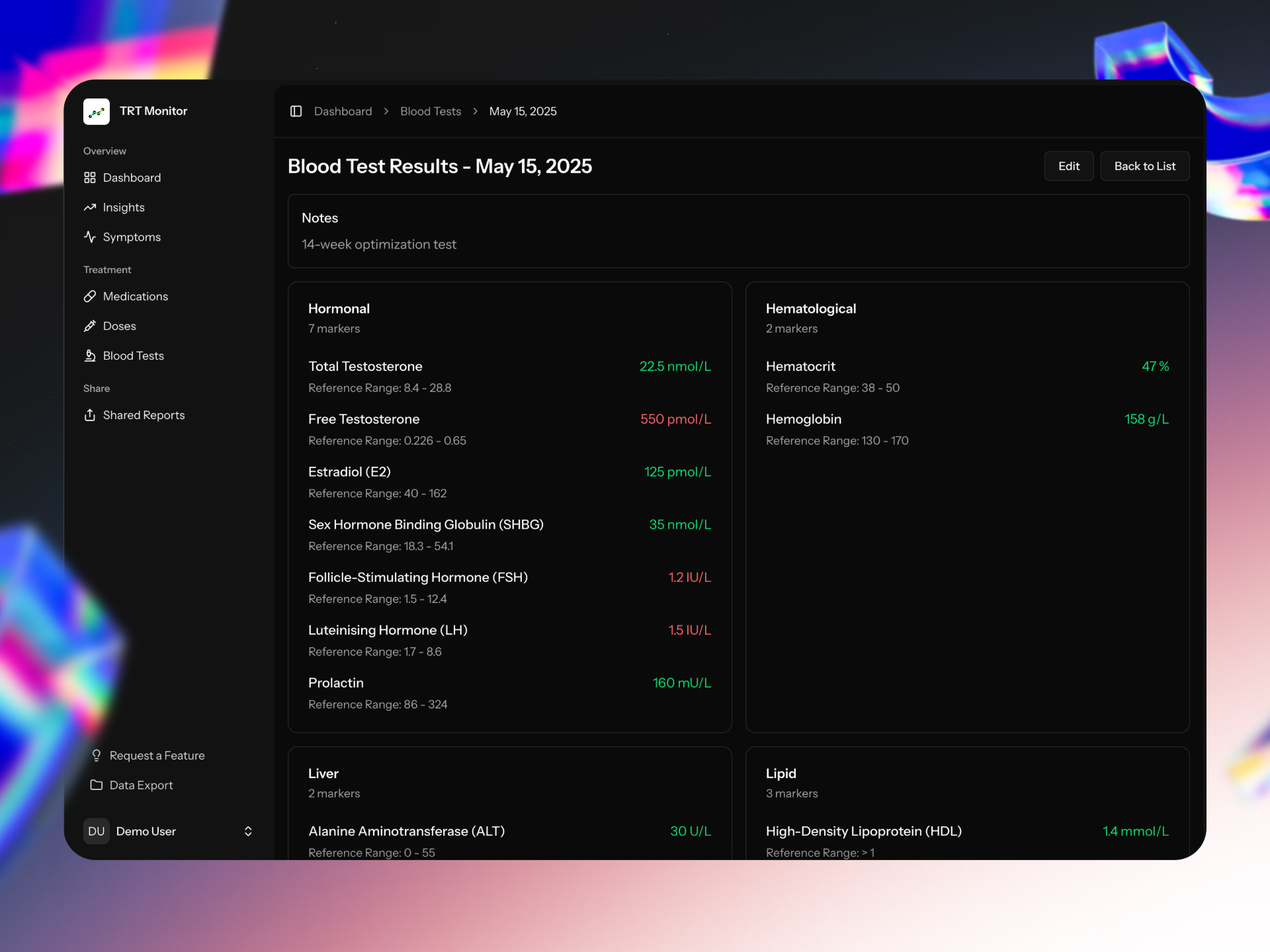Managing testosterone therapy isn’t just about how you feel-it’s also about what’s happening under the hood.
Whether you’re working with a clinic or self-administering, routine blood work is key to keeping your protocol safe, effective, and responsive over time. But many men aren’t sure what to test or how often they should do it.
Here’s a practical guide that strips out the noise and shows you exactly what labs to track-and when to check them.

📋 The Core Blood Work Checklist
This is the set of tests nearly every man on TRT should be monitoring regularly (AAFP).
🧪 Total Testosterone
- Confirms your dose is effective and in range
- When to test: Before starting, 6-8 weeks after changes, and every 6-12 months
🧪 Free Testosterone
- Measures how much testosterone is actually available in your body
- When to test: Same schedule as Total T
🧪 Estradiol (E2)
- Tracks conversion of testosterone into estrogen
- Important for mood, libido, and water retention (PubMed)
- When to test: With every protocol change and at least every 6-12 months
🧪 Hematocrit & Hemoglobin
- Detects blood thickening (which can increase blood pressure and clot risk)
- When to test: Every 3-6 months (Cleveland Clinic)
🧪 SHBG (Sex Hormone-Binding Globulin)
- Affects how much Free T is available
- When to test: At baseline and occasionally, especially if symptoms don’t match lab numbers
🧪 PSA (Prostate-Specific Antigen)
- Monitors prostate health (mostly for men over 40)
- When to test: Baseline and annually
🧪 Lipid Panel (Cholesterol)
- TRT can shift LDL, HDL, and triglyceride levels
- When to test: Baseline, then yearly (Mayo Clinic)
🧪 Liver Enzymes (ALT, AST)
- Gauges liver stress from TRT or other medications
- When to test: Baseline and as needed (MedlinePlus)
📆 A Sample Testing Timeline
For most users, this is a sensible rhythm:
- Before starting TRT - ✅ Full panel
- 6-8 weeks after starting or changing dose - ✅ Recheck Total T, Free T, E2, and hematocrit
- Every 6-12 months - ✅ Full panel to monitor ongoing health and treatment effectiveness
If you’re on a more aggressive protocol or have a history of high hematocrit or estrogen-related symptoms, testing more often (every 3-4 months) might be a better idea.
🩸 How to Prepare for Your Lab Draw
- Go in the morning - between 7-10am is best (MedlinePlus)
- Fast 8-12 hours - especially important for lipids (CDC)
- Avoid heavy lifting the day before - it can temporarily skew liver enzymes
- No sex for 24-48 hours - this can affect PSA results (Cleveland Clinic)
These small adjustments help ensure your results reflect your true baseline-not a fluke from last night’s workout or date night.
🤔 What If My Symptoms Don’t Match My Labs?
This happens more than people think.
You might feel fantastic with low-normal testosterone, or flat with high numbers. That’s why symptom tracking is just as important as blood work. The numbers don’t lie-but they don’t tell the full story either.
Many doctors agree: optimal TRT should be based on both labs and how you feel (Cleveland Clinic).

💡 Tip: Use a Tracker That Keeps Everything in One Place
Trying to manage all this in your head-or a spreadsheet-is a headache. That’s why we built TRT Monitor.
It helps you:
- Log your blood test results
- Track your symptoms alongside your labs
- Spot patterns between dose timing and how you feel
You can even generate a filtered report with a single click to share with a clinic or forum.
Final Thoughts
Testosterone therapy isn’t “set it and forget it.” You don’t need to obsess over every number, but knowing when to test-and why-can save you from issues down the road.
If you haven’t had labs done recently, now’s a great time to schedule them. Your future self will thank you.
Want to stay on track?
Sign up for free and start logging your labs and symptoms today. It’s the easiest way to keep your TRT journey safe, effective, and tailored just for you.